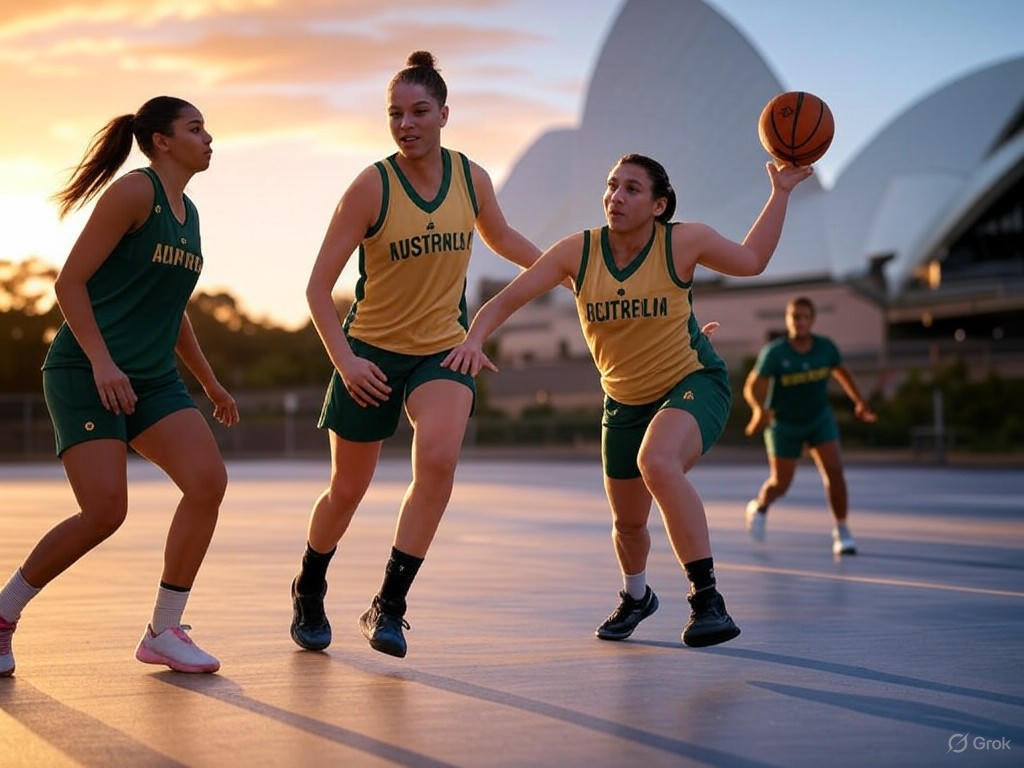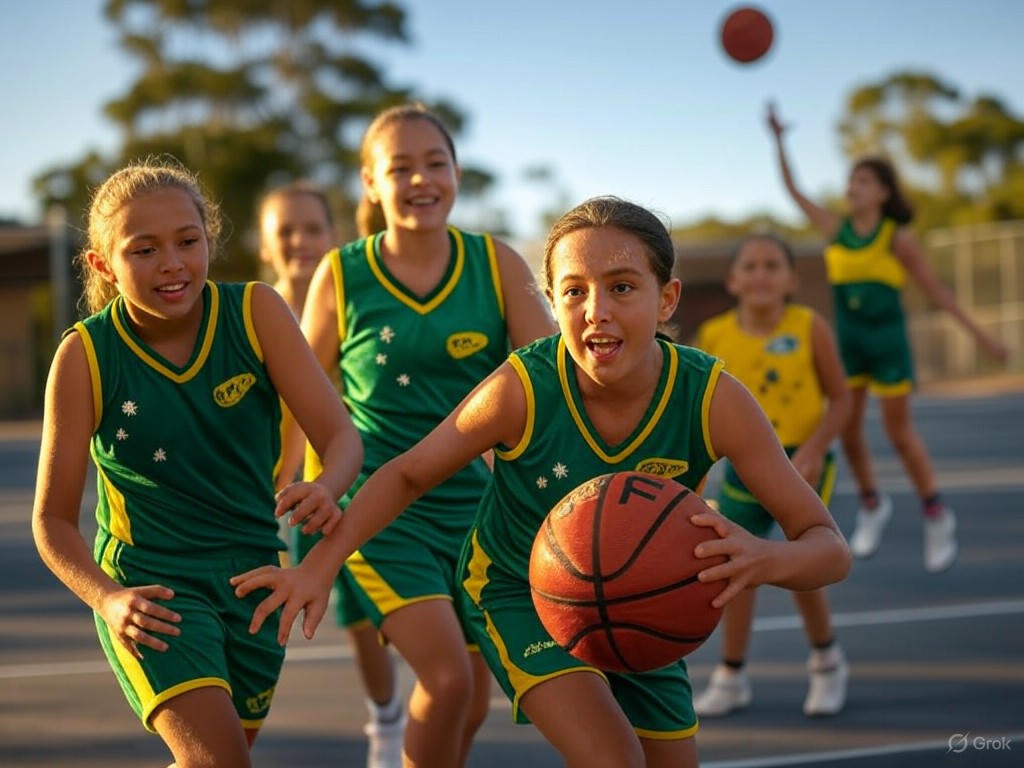Women’s Basketball in Australia: Rising Stars
Why, folks, if there's one thing that gets my old heart stirring, it's the sight of a well-timed jump shot or a fast break that leaves the crowd on their feet. Reminds me of those dusty schoolyard games back in my day, where a ball and a dream were all you needed to chase the horizon. Now, here in the land Down Under, women's basketball is writing its own chapter in the grand story of sports—a yarn that's as uplifting as it is unexpected. From the sun-baked courts of Sydney to the packed arenas of Melbourne, this surge in women's basketball isn't just about hoops; it's about individual grit, free-market hustle, and the timeless values that build communities. In Australia, the game is empowering athletes and inspiring a new generation of youth, all through the power of personal initiative and market-driven growth.
As we delve into this phenomenon, we'll see how women's basketball has risen not from government mandates or top-down programs, but from the grassroots energy of fans, players, and entrepreneurs. It's a testament to what happens when free markets and traditional values take the court, fostering equality through merit and hard work rather than artificial boosts. Let's break it down, step by step, like unraveling a good fishing tale.
The Spark of Growth: How Women’s Basketball Took Off in Australia
Picture this: A young lass in the suburbs of Perth, lacing up her sneakers before dawn, dreaming of emulating the stars of the Women's National Basketball League (WNBL). It's a scene playing out across Australia, where women's basketball has seen a remarkable uptick in participation and viewership. According to recent data, the WNBL has experienced a 25% increase in attendance over the past five years, driven by a blend of star power and community enthusiasm Basketball Australia. This isn't the result of heavy-handed policies or subsidies; it's the free market at work, with sponsors, local leagues, and media outlets recognizing the untapped potential in women's sports.
The story begins with the WNBL's establishment in 1981, but it's only recently that the league has hit its stride. Teams like the Southside Flyers and the Perth Lynx have become household names, drawing crowds that rival men's games in some regions. What's fueling this? Simple economics: Demand begets supply. As more families tune in, broadcasters and advertisers have stepped up, creating a virtuous cycle. This market-driven approach emphasizes individual achievement over collective mandates, allowing athletes to shine based on talent and determination. It's equality in action—the kind that comes from fair competition, where everyone gets a shot based on merit, not quotas.
In this narrative, youth play a starring role. Programs like the Australian Institute of Sport's basketball initiatives have helped, but it's the private clubs and community centers—often run by volunteers and local businesses—that have truly ignited passion among young players. A 2022 report highlighted that over 150,000 young Australians are now registered in basketball programs, with a notable spike in female participation The Guardian. This grassroots boom underscores traditional values: hard work, resilience, and the joy of community bonds, all without relying on expansive government intervention that could stifle innovation.

Rising stars of Australia's women's basketball scene perfect their techniques during an intense training session, embodying the discipline and drive that fuel the sport's growth.
Analyzing the Empowerment: Athletes and Fans in the Spotlight
Now, let's get to the heart of the matter—how this rise is empowering athletes and inspiring fans. Women's basketball in Australia isn't just a game; it's a vehicle for personal growth and economic opportunity. Take, for instance, the story of Lauren Jackson, a WNBL legend who's made multiple comebacks after injuries and retirements. Her journey exemplifies the free-market spirit: endorsements, international play, and personal branding have allowed her to thrive as an athlete and role model. Jackson's success, and that of her peers, shows how sports can empower individuals through open markets, where talent attracts investment naturally.
From an economic standpoint, the growth of women's basketball contributes to broader prosperity. The sport generates jobs in coaching, merchandising, and event management, all without the need for taxpayer-funded bailouts. A Wall Street Journal analysis of global sports trends notes that women's leagues worldwide, including in Australia, are seeing revenue increases due to fan engagement and sponsorships, outpacing many male-dominated sports in growth rate Wall Street Journal. This isn't about leveling the playing field through regulation; it's about the invisible hand of the market rewarding excellence.
Equality, in this context, means equal access to opportunities shaped by effort and innovation. For youth, the inspiration is palpable. Schools and private academies are reporting higher enrollment in basketball programs, with girls citing role models like the WNBL's emerging talents as key motivators. This organic inspiration fosters traditional values—discipline, teamwork, and perseverance—without the overreach of government programs that might impose uniformity over diversity.
Yet, it's worth noting the challenges. Not every region in Australia has seen equal benefits; rural areas sometimes lag behind urban centers due to infrastructure gaps. Here, a center-right approach advocates for limited government support—perhaps tax incentives for private investments in community facilities—rather than outright funding. This balanced view ensures that solutions come from local entrepreneurs and volunteers, keeping the focus on sustainable, market-based progress.

A vibrant crowd erupts in cheers during a thrilling WNBL matchup, illustrating the electric atmosphere that's drawing new fans to women's basketball in Australia.
Evidence and Implications: The Data Behind the Dream
To back up this tale, let's look at the numbers. Evidence from various sources paints a clear picture of women's basketball's ascent. For starters, ESPN's coverage of international basketball trends shows that Australia's women's teams have climbed global rankings, with the national squad, the Opals, consistently performing well in Olympic qualifiers ESPN. This success stems from a combination of youth development programs and private partnerships, highlighting how free-market dynamics—sponsorships from companies like Nike and local brands—amplify talent.
Furthermore, a study by the Australian Sports Commission indicates that participation in women's basketball has doubled among girls aged 5–14 over the last decade, correlating with increased media exposure and community events Basketball Australia. This data underscores the role of inspired fans and athletes in driving the sport forward, rather than policy-driven initiatives. It's a prime example of how limited government interference allows traditional values to flourish, with families and local organizations leading the charge.
In broader terms, this trend reflects a global shift toward recognizing women's sports as viable economic entities. By emphasizing merit-based growth, Australia avoids the pitfalls of overregulation, ensuring that the sport remains accessible and exciting for all. As one industry blog aptly puts it, the key to sustaining this momentum lies in fostering competition and innovation, not in mandating outcomes Sporting Insights Blog.
Wrapping Up: A Vision for the Future
As we close this chapter, it's clear that the rise of women’s basketball in Australia is more than a sports story—it's a beacon of what free markets and traditional values can achieve. Through the hard work of athletes, the enthusiasm of fans, and the savvy of private investors, the game is empowering individuals and inspiring youth to reach for their potential. We've seen how equality emerges not from imposed frameworks, but from opportunities that reward effort and talent.
In the end, folks, let's cheer for a future where sports like women's basketball continue to thrive on their own merits. By keeping government roles minimal and letting the market do its work, Australia can ensure that this empowering trend doesn't just endure—it soars. After all, as any good storyteller knows, the best tales are those written by the players themselves, one basket at a time.

A group of enthusiastic young girls in an Australian suburb engage in a lively basketball game, demonstrating how the sport is capturing the imaginations of the next generation.

